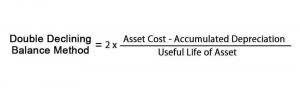Bookkeeper Job Description, Skills, Experience and Education

Comptrollers also review all accounting activities to ensure high standards and make adjustments to budgets as needed. By taking these steps, you can effectively develop bookkeeper skills that will enhance your resume and increase your employability. Proficiency in bookkeeping software and general computer literacy, as well as strong mathematical computing skills, are key for any bookkeeping professional. Technical skills are the more formal skills that you can learn through your education. Most bookkeeping professionals work traditional full-time schedules in an office setting. However, you might work remotely as a part-time or full-time employee or as a freelancer.
- In a corporate environment, a controller supervises all other accounting staff and usually reports to a chief financial officer or director of finance.
- A Comptroller is a highly ranked accounting professional in a government or non-profit organization.
- Technical skills are the more formal skills that you can learn through your education.
- For bookkeepers with 1-2 years of experience, this early career bookkeeper resume example demonstrates how to showcase growing expertise and initial achievements in the field.
- Take your learning and productivity to the next level with our Premium Templates.
What Your Bookkeeper Resume Summary Should Include
For example, a bookkeeper may be required to learn a specific accounting software system or participate in certain meetings. Responsibilities for bookkeepers can vary widely from business to business, though there are a number of very common bookkeeping responsibilities. Remember that you want to tailor the role’s responsibilities in the job description so that it’s not just aligned with the position but with your company. A Cost Accountant is tasked with examining, recording, and summarizing a company’s costs, including products and services. The work of a Cost Accountant helps organizations plan budgets and improve cost efficiency. A Cost Accountant records and classifies expenditures to create financial statements for senior management.
What are job titles that can be used to describe a Bookkeeper?

Explore professional resume, cv, cover letter templates, expert tips, and easy-to-use tools to build your perfect resume and boost your job search success. Consider seeking feedback from career advisors, mentors, or professionals in your industry to improve your resume further. Emphasize transferable skills that are relevant to the job you're applying for, such as communication, problem-solving, and leadership skills. Certification and training opportunities are ample in the field of bookkeeping.

You'll get instant access to all skills and keywords, plus be
- Proficient in tracking restricted and unrestricted funds, preparing financial statements for board meetings, and ensuring compliance with non-profit accounting standards.
- A Tax Accountant offers tax planning services and advice that assist businesses in saving money.
- According to Glassdoor, the estimated total pay for bookkeepers in the US is $64,096 per year 1.
- Real-world experiences can help you acquire important skills necessary to succeed in bookkeeping.
- An accountant will review the work of the Bookkeeper in most organizations before finalizing monthly, quarterly, or annual financial statements.
- Customize your resume for each job application by highlighting relevant skills and experiences that match the job description.
- The skills list is tailored to non-profit accounting needs, demonstrating in-depth knowledge of the sector.
Enhance your skills as a bookkeeper with the Intuit Academy Bookkeeping Professional Certificate on Coursera. Get started today and contra asset account break into the field of bookkeeping as a credentialed professional. Although a formal college degree isn't usually required for becoming a bookkeeper, acquiring one strengthens your resume and boosts your hiring potential.

Sample Bookkeeper Skills for Resume
- They might include creating and managing invoices, maintaining general ledgers, running payroll, and preparing financial statements.
- The core function of a bookkeeper is to ensure that all bills are paid on time, transactions are recorded correctly, payroll runs on time and taxes are filed correctly.
- Remember that you want to tailor the role’s responsibilities in the job description so that it’s not just aligned with the position but with your company.
- An Accountant Intern is responsible for basic office tasks such as making copies of client invoices or files.
- An Accounting Coordinator also manages the contract filing systems and creates monthly financial statements.
- After completing your education, you can seek an internship and get on-the-job training to become a bookkeeper.
Additionally, we’ll provide practical examples to help you articulate these skills in a compelling manner. By the end of this guide, you’ll be equipped with the knowledge to craft a resume that not only captures attention but also showcases your qualifications effectively. According to Glassdoor, the estimated total pay for bookkeepers in the US is $64,096 per year 1. This figure includes an average base salary of $54,420 and $9,676 in additional pay. A bookkeeper can expect to earn a salary in the range of $30,000-$60,000 a year in the US.
List of 20 Bookkeeper Skills for Resume
A Tax Accountant offers tax planning services and advice that assist businesses in saving money. As in most departments, the #2 person on the accounting team is typically a vice president. While there are many different Accounting VP titles, the most common are VP of Accounting and Finance, VP of Finance and VP of Accounting. The leader of most accounting teams is the Chief Financial Officer or Chief Accounting Officer (CAO). The CAO title, while less common, is used at major businesses including Dell and Allstate Insurance.
Bookkeeper Job Description Example
This career changer bookkeeper resume sample effectively highlights the candidate's transferable skills from retail another title for bookkeeper management. The summary clearly states the career transition and emphasizes relevant abilities. The experience section showcases financial responsibilities in previous roles, demonstrating applicability to bookkeeping. The ongoing education in accounting and recent certifications show commitment to the new career path, making this resume appealing to employers seeking entry-level bookkeepers with diverse backgrounds.
What Are the Best Soft Skills to Add to a Bookkeeper Resume?

This bookkeeper team lead/supervisor resume excels in showcasing both leadership and technical skills. The summary effectively communicates the candidate's transition from individual contributor to team leader. The experience section highlights specific achievements in team management, process improvement, and client relations. The skills list balances soft skills crucial for leadership with advanced technical proficiencies. The certifications demonstrate ongoing professional development, making this resume ideal for employers seeking a seasoned bookkeeper ready to take on supervisory responsibilities and drive team performance. Crafting an impressive bookkeeper resume is crucial for standing out in the competitive financial industry.
Wage FAQs Department of Labor and Industry Commonwealth of Pennsylvania

Commonwealth of Pennsylvania government websites and email systems use "pennsylvania.gov" or "pa.gov" at the end of the address. Before sharing sensitive or personal information, make sure you're on an official state website. SHRM Members enjoy unlimited access to articles and exclusive member resources.
Are Salaried Employees Entitled to Overtime?

If an employer can anticipate peaks in the workload, it can switch to a different schedule with high overtime built into it rather than force overtime on employees at the last minute. Communication with employees is essential; they want to know as far in advance as possible about the need to work overtime. Join and enjoy unlimited access to SHRM Executive Network Content. Get unlimited access to articles and member-exclusive resources. how much is overtime Refer to ADP’s FLSA & Overtime Rule Guide for proposed changes to FLSA exemption and the latest salary level requirements.
For federal agencies
With that said, it's commonpractice among most employers to provide additional pay on these occasions as a way to motivate and maintain the satisfaction of their workers. It's important to note that there isn't a federally mandated rate for this extrapay, however. You'll often get a "time and a half" rate when you work standard overtime, which means your pay rate is 1.5times your regular hourly wage. This typically happens when you work more than the standard number of hours in a day or week, https://www.facebook.com/BooksTimeInc/ often beyond 40 hours in a week inmany places.
- Let’s simplify the numbers and get to the heart of how overtime really works.
- Before sharing sensitive or personal information, make sure you're on an official state website.
- One of the questions employees frequently have is about how much they will be paid for working overtime hours.
- COMPLEX participates in various affiliate marketing programs, which means COMPLEX gets paid commissions on purchases made through our links to retailer sites.
- In essence, employees who work beyond 40 hours in a single week are entitled to overtime pay.
- “Third parties” include but are not limited to consumer reporting agencies, creditors, lenders, debt collectors, rental agencies, employers, courts, and law enforcement agencies.
Overtime pay calculation for nonexempt employees earning a salary

Such shifts usually come without warning https://www.bookstime.com/ and can take their toll on the health, safety, and productivity of employees. The number of employees has no bearing on the payment of overtime. Click here for complete details on Pennsylvania's new minimum wage requirements. This guide is intended to be used as a starting point in analyzing state overtime laws and is not a comprehensive resource of requirements.
- If you are paid by the hour, you can calculate your time and a half rate by multiplying your hourly rate by 1.5.
- Department of Labor to help you determine if you're eligible for overtime pay and to calculate how much overtime you will receive for a typical pay period.
- Discover how to track time efficiently with free Excel spreadsheet templates, and explore the automated solutions for hassle-free time tracking.
- For example, Alaska, California, Nevada, Puerto Rico, and the Virgin Islands have daily overtime laws for employees who work over eight hours a day.
- Under Pennsylvania law, an employer must pay for travel time if an employee is required to report to the employer's establishment to clock in, load up, etc.
- Employers with hourly wage earners need to know how to calculate overtime to ensure that they are paying employees the right amount and complying with the FLSA.
- Although high levels of overtime may be tolerable for short durations, long-term overtime may be harmful.

Department of Labor Fair Labor Standards Act Advisor's website. If the Department determines that you have a valid wage claim, the time it takes to collect the money from your employer can range from several days to several months. Many things can speed up or slow down the payment of a wage claim. Local, state, and federal government websites often end in .gov.

What Can You Do if You’re Not Getting Your Overtime Pay?
Employers should consult legal counsel to ensure employees are classified correctly. Aside from these exceptions, employees who refuse to work the extra hours can be disciplined and even terminated. If an employee shows up for a shift and is told that there will be no work that day, you do not need to count that first hour of work. For example, when a construction worker shows up for a job and is told the day is rained out, you do not need to pay them for the first hour. "Is Extra Pay Required For Weekend Or Night Work?"Additional information about overtime pay.

We charge nothing for our initial legal consultation with you. We know that you won’t necessarily know whether you need a lawyer until you talk to a lawyer. So, we invite you to call or contact us today to schedule your free consultation. This means that while you earn more for the extra hours worked, your overall tax liability remains consistent with your normal income bracket. It’s important to factor this into your financial planning to avoid surprises during tax season.
Allowance for Doubtful Accounts Overview, Guide, Examples

For example, a start-up customer may be considered a high risk, while an established, long-tenured customer may be a low risk. Then, it aggregates all receivables in each grouping, calculates each group by the percentage, and records an allowance equal to the aggregate of all products. If it does not issue credit sales, requires collateral, or only uses the highest credit customers, the company may not need to estimate uncollectability. In the example above, we estimated an arbitrary number for the allowance for doubtful accounts. There are two primary methods for estimating the amount of accounts receivable that are not expected to be converted into cash. Later, a customer who purchased goods totaling $10,000 on June 25 informed the company on August 3 that it already filed for bankruptcy and would not be able to pay the amount owed.
- Rather than waiting to see exactly how payments work out, the company will debit a bad debt expense and credit allowance for doubtful accounts.
- The accounts receivable aging method is a report that lists unpaid customer invoices by date ranges and applies a rate of default to each date range.
- For example, based on previous experience, a company may expect that 3% of net sales are not collectible.
- Therefore, it can assign this fixed percentage to its total accounts receivable balance since more often than not, it will approximately be close to this amount.
- Note that the debit to the allowance for doubtful accounts reduces the balance in this account because contra assets have a natural credit balance.
The company now has a better idea of which account receivables will be collected and which will be lost. For example, say the company now thinks that a total of $600,000 of receivables will be lost. The company must record an additional expense for this amount to also increase the allowance's credit balance. Assume a company has 100 clients and believes there are 11 accounts that may go uncollected. Instead of applying percentages or weights, it may simply aggregate the account balance for all 11 customers and use that figure as the allowance amount. Companies often have a specific method of identifying the companies that it wants to include and the companies it wants to exclude.
How to Estimate the Allowance for Doubtful Accounts
Therefore, the allowance is created mainly so the expense can be recorded in the same period revenue is earned. The first step in accounting for the allowance for doubtful accounts is to establish the allowance. This is done by using one of the estimation methods above to predict what proportion of accounts receivable will go uncollected. For this example, let's say a company predicts it will incur $500,000 of uncollected accounts receivable. Some companies may classify different types of debt or different types of vendors using risk classifications.
Management may disclose its method of estimating the allowance for doubtful accounts in its notes to the financial statements. Two primary methods exist for estimating the dollar amount of accounts receivables not expected to be collected. The accounts receivable aging method is a report that lists unpaid customer invoices by date ranges and applies a rate of default to each date range. Though the Pareto Analysis can not be used on its own, it can be used to weigh accounts receivable estimates differently. For example, a company may assign a heavier weight to the clients that make up a larger balance of accounts receivable due to conservatism.
Pareto Analysis Method
The company can recover the account by reversing the entry above to reinstate the accounts receivable balance and the corresponding allowance for the doubtful account balance. Then, the company will record a debit to cash and credit to accounts receivable when the payment is collected. A company can further adjust the balance by following the entry under the "Adjusting the Allowance" section above.
Then, the company establishes the allowance by crediting an allowance account often called 'Allowance for Doubtful Accounts'. Though this allowance for doubtful accounts is presented on the balance sheet with other assets, it is a contra asset that reduces the balance of total assets. Yes, allowance accounts that offset gross receivables are reported under the current asset section of the balance sheet. This type of account is a contra asset that reduces the amount of the gross accounts receivable account. Accounts use this method of estimating the allowance to adhere to the matching principle. The matching principle states that revenue and expenses must be recorded in the same period in which they occur.
Why Do Accountants Use Allowance for Doubtful Accounts?
Over 1.8 million professionals use CFI to learn accounting, financial analysis, modeling and more. Start with a free account to explore 20+ always-free courses and hundreds of finance templates and cheat sheets. The customer who filed for bankruptcy on August 3 manages allowance for doubtful accounts balance sheet to pay the company back the amount owed on September 10. The company would then reinstate the account that was initially written off on August 3. Note that if a company believes it may recover a portion of a balance, it can write off a portion of the account.
An allowance for doubtful accounts is a contra account that nets against the total receivables presented on the balance sheet to reflect only the amounts expected to be paid. The allowance for doubtful accounts estimates the percentage of accounts receivable that are expected to be uncollectible. However, the actual payment behavior of customers may differ substantially from the estimate. Contra assets are still recorded along with other assets, though their natural balance is opposite of assets.
Writing Off Account
Regardless of company policies and procedures for credit collections, the risk of the failure to receive payment is always present in a transaction utilizing credit. Thus, a company is required to realize this risk through the establishment of the allowance for doubtful accounts and offsetting bad debt expense. In accordance with the matching principle of accounting, this ensures that expenses related to the sale are recorded in the same accounting period as the revenue is earned. The allowance for doubtful accounts also helps companies more accurately estimate the actual value of their account receivables.
